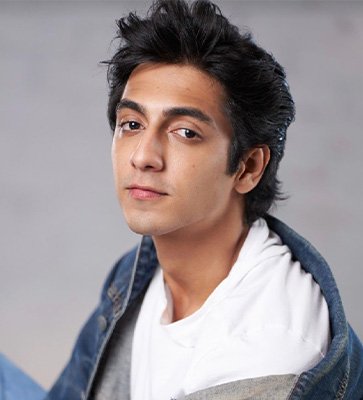The name Major Sandeep Unnikrishnan is etched in the memory of every Indian who remembers the horrific 26/11 Mumbai attacks. He wasn’t just a soldier—he was the embodiment of selfless service and unwavering courage. Major Unnikrishnan’s sacrifice during the 2008 terror attack not only saved countless lives but also served as a defining moment in India’s fight against terrorism.
Major Sandeep Unnikrishnan: A Legacy of Bravery, Sacrifice, and Patriotism
Table of Contents
1. Introduction
The name Major Sandeep Unnikrishnan is etched in the memory of every Indian who remembers the horrific 26/11 Mumbai attacks. He wasn’t just a soldier—he was the embodiment of selfless service and unwavering courage. Major Unnikrishnan’s sacrifice during the 2008 terror attack not only saved countless lives but also served as a defining moment in India’s fight against terrorism.
2. Early Life and Background
Sandeep Unnikrishnan was born on March 15, 1977, in Kozhikode, Kerala, into a Malayali family. His father, K. Unnikrishnan, was a retired ISRO officer, and his mother, Dhanalakshmi Unnikrishnan, was a homemaker. The family later settled in Bangalore, where Sandeep spent most of his childhood.
Even as a young boy, Sandeep exhibited traits of leadership, curiosity, and compassion. Neighbors recall him as calm and focused, often spending his time reading or playing outdoor sports. His fascination with the armed forces started early and was nurtured through books and films centered on war and valor.
3. Education and Military Training
Sandeep completed his schooling from Frank Anthony Public School, Bangalore, where he developed a keen interest in defense services. He was deeply patriotic and determined to join the Indian Army, despite knowing the risks and challenges.
In 1995, he joined the prestigious National Defence Academy (NDA) in Khadakwasla, Pune. He was part of the 94th Course and later proceeded to the Indian Military Academy (IMA) in Dehradun for advanced military training. At both institutions, he was known for his discipline, athleticism, and sharp intellect.
4. Commission into the Indian Army
On June 12, 1999, shortly after the Kargil War began, Sandeep was commissioned as a Lieutenant into the 7th Battalion of the Bihar Regiment—one of the oldest and most respected infantry regiments in the Indian Army.
This period marked the beginning of a military career defined by dedication, resilience, and an unwavering commitment to national service. He served in various high-pressure environments, including along the Line of Control (LoC) in Jammu and Kashmir, where he gained real-time experience in counterinsurgency operations.
5. Rise through the Ranks
Over the years, Major Unnikrishnan steadily rose through the ranks. His superiors recognized him as an officer who led from the front, and peers looked up to him for his strategic thinking and moral integrity. He was promoted to Captain and then Major, serving in various capacities including operational planning and field command.
6. Entry into the National Security Guard (NSG)
Drawn to the challenge of elite counter-terror operations, Sandeep volunteered to join the National Security Guard (NSG)—India’s premier counter-terrorism and special operations unit. Known as the Black Cats, NSG commandos are trained in high-risk urban warfare, hostage rescue, and anti-hijack missions.
Sandeep underwent the rigorous NSG training and was selected as part of the 51 Special Action Group (SAG). His training involved simulated combat, close-quarter battle (CQB), and high-altitude missions. He excelled in every aspect and earned the admiration of both trainers and fellow commandos.
7. 26/11 Mumbai Terror Attacks
On the night of November 26, 2008, Mumbai was rocked by coordinated terrorist attacks across multiple locations including Chhatrapati Shivaji Terminus, Leopold Cafe, Oberoi Trident, and the Taj Mahal Palace Hotel.
Ten heavily armed terrorists from Pakistan-based Lashkar-e-Taiba had entered Mumbai via the sea route, unleashing violence and chaos that lasted for over 60 hours, killing 166 people and injuring hundreds.
The Indian government immediately deployed the NSG, and Major Sandeep was chosen to lead the 10-member team of 51 SAG tasked with storming the Taj Mahal Palace Hotel, where terrorists had taken hostages.
8. Operation at Taj Mahal Palace Hotel
Major Unnikrishnan and his team arrived at the Taj and began securing the hotel floor by floor. The structure was vast and complex, making it a challenging environment for a rescue operation. Smoke, fire, darkness, and uncertainty hung over the entire mission.
As the team advanced, Major Unnikrishnan insisted on going ahead, checking rooms for hostages and eliminating threats. His calm demeanor under pressure and his tactical coordination helped the team rescue multiple civilians from occupied sections of the hotel.
9. The Final Stand
On November 28, while securing the sixth floor of the Taj, his team encountered heavy gunfire. One of the commandos, Sunil Kumar Yadav, was critically injured. Major Sandeep ordered his team to evacuate the injured soldier while he engaged the terrorists alone to provide cover.
His last words over the radio were, “Do not come up, I will handle them.” Moments later, he was shot during the intense exchange and succumbed to his injuries. His body was recovered the next day, still in combat posture, a testimony to his final moments of valor.
10. Aftermath and National Reaction
The nation was shaken not only by the scale of the attack but also by the heroism of Major Unnikrishnan. His death sent shockwaves across India, with news channels and newspapers extensively covering his bravery.
Thousands attended his funeral in Bangalore. As his body was brought home wrapped in the tricolor, his mother wept inconsolably, and his father stood firm, saying, “He has done the nation proud.”
11. Ashoka Chakra and National Honors
In recognition of his unmatched bravery, Major Sandeep Unnikrishnan was posthumously awarded the Ashoka Chakra—India’s highest peacetime gallantry award—on January 26, 2009.
The citation read:
“Major Sandeep Unnikrishnan displayed most conspicuous bravery, resolute leadership, and supreme sacrifice while fighting terrorists.”
The award was accepted by his mother from the President of India at the Republic Day ceremony.
12. The Family’s Courage
Behind every soldier is a family that silently shares the burden. For the Unnikrishnans, Sandeep’s death was both a loss and a moment of pride. His father, K. Unnikrishnan, later became a public figure advocating for national security, youth motivation, and commemorating martyrs.
Their dignity in grief and their continued efforts to honor their son have been widely respected.
13. Media Coverage and Public Mourning
Indian media hailed Major Sandeep as the face of bravery. His photographs in uniform, smiling and poised, became iconic. The phrase “Do not come up, I will handle them” was repeated on banners, posters, and television across the country.
Citizens gathered in candlelight vigils, social media flooded with tributes, and schools, colleges, and defense academies commemorated his memory with solemn pride.
14. Impact on the Armed Forces
Major Unnikrishnan’s martyrdom reignited public admiration for the armed forces. His sacrifice emphasized the importance of counter-terror training and led to reforms in NSG deployment and rapid response systems.
He became a role model for young officers, a reminder of the ultimate price of service, and a benchmark for bravery.
15. Influence on Young Indians
After 26/11, thousands of youngsters applied to join the Army, inspired by Major Unnikrishnan. His story continues to motivate youth to choose a life of discipline, service, and sacrifice.
Defense academies report that his name often comes up in interviews, essays, and motivation letters from cadet aspirants.
16. Commemorations and Tributes
Numerous schools, roads, and public buildings across India have been named in his honor. The Sandeep Unnikrishnan Memorial Trust was established to support military families and promote patriotic values among youth.
His life is studied in military institutions as a case study in leadership and valor.
17. Major Sandeep in Popular Culture
In 2022, the biopic “Major”, starring Adivi Sesh, was released in multiple Indian languages. The film received critical acclaim and brought Major Sandeep’s story to a new generation, highlighting not just his battlefield heroics but also his personal journey.
The movie was supported by his family and is regarded as one of the most authentic representations of a soldier’s life.
18. Memorials and Institutions in His Name
- Major Sandeep Unnikrishnan Road in Bangalore
- Sandeep Unnikrishnan Stadium in Kerala
- Annual scholarships named after him in NDA and IMA
- Commemorative stamps and school events on his birthday
These acts ensure his memory lives on in everyday life.
19. The Spirit of a Soldier
Major Sandeep Unnikrishnan lived and died by the motto: “Shaurya, Dridhata, Karm Nishtha” (Courage, Determination, Duty). He didn’t seek glory—he sought purpose. His courage wasn’t a reaction but a way of life.
His story is a mirror to the strength, resolve, and sacrifice of India’s armed forces. He taught the nation that true bravery lies in the face of fear, and true leadership means protecting others before yourself.
20. Conclusion
More than a name, Major Sandeep Unnikrishnan is a symbol—of grit, valor, and the quiet courage of Indian soldiers. His story resonates beyond uniformed men and women; it touches every citizen who dreams of a safe and proud India.
As time passes, heroes are remembered through actions, stories, and the lives they’ve touched. In this regard, Major Sandeep Unnikrishnan’s legacy is immortal. His sacrifice remains a call to duty for generations to come.
“Do not come up, I will handle them.”
These words echo through time—not as a farewell, but as a call to courage for every Indian.
Last Updated on Thursday, July 17, 2025 12:44 pm by Admin




